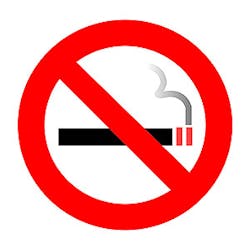Subgingival irrigation in advanced periodontitis; diagnosis of periodontitis based on smoking and obesity
Subgingival irrigation with a newly developed pocket irrigator in advanced periodontitis
By L.J. Van Dijk, M.A. Lie, A.J. Van Winkelhoff, F. Abbas, Groningen/Netherlands
Aim: The aim of the study is to evaluate a new pocket irrigator in advanced periodontitis. A new pocket irrigator has been developed which irrigates under a small negative pressure. A pulsating water stream applied on the entrance of the pocket is alternated by a light vacuum.
Material and Methods: 40 patients with advanced periodontitis were clinically and microbiologically measured before and after treatment. Two quadrants were randomly assigned and treated with SRP, the other quadrants were irrigated twice weekly for ten (10) seconds per interdental area, for three (3) consecutive weeks. Furthermore oral hygiene instructions were given and all teeth were cleaned and polished supragingivally. No subgingival calculus was removed from the irrigated teeth.
Results: PPD before SRP was reduced from 4.38±1.12 to 3.46±0.76. Irrigation reduced PPD from 4.35±1.04 to 3.51±0.86. Paired Student t-test showed significant improvements after both treatment modalities, whereas no difference existed between the two groups. Clinical attachment level was significantly improved in both groups, 4.44±1.12 to 3.59±0.84 after SRP and 4.40±1.03 to 3.59±0.92 after irrigation. Differences between the two groups were not significant. G.I and P.I. were equally improved. The colony forming units in the SRP group was reduced from 1.3x10-7 to 1.5x10-6 and after irrigation from 1.6x10-7 to 1.3x10-6, with p values<0.05 statistically significant improvements. No difference could be seen between the two groups.
Conclusion: It can be concluded that the newly developed pocket irrigator results in a clinically relevant improvement of the periodontal condition and is as effective as subgingival instrumentation despite the fact that subgingival calculus is not removed.
Derivation of a clinical prediction rule for the diagnosis of periodontitis based on smoking and obesity
By C. Susin(1), E.J. Gaio(2), A.N. Haas(2), J.M. Albandar(3)
(1)Augusta/United States of America, (2)Porto Alegre/Brazil, (3)Philadelphia/United States of America
Aim: Clinical prediction rules (CPR) are decision-making tools used by health care professionals in order to predict clinical outcomes and suggest a course of action. Our aim was to derive a CPR for periodontal diagnosis based on smoking history and body mass index (BMI).
Material and Methods: A population-based random sample of 1,036 individuals 20-65 years-old (478M/558F) with at least six (6) teeth present were included. Full-mouth, six-sites per tooth clinical examinations were carried out by calibrated examiners. Periodontitis cases were defined as subjects with CAL ≥5 mm in ≥30% of the teeth. Smokers were classified according to lifetime smoking into light (< 10 packyears) and heavy smokers (≥ 10 pack years). Nonsmokers had never smoked. BMI was categorized as suggested by the WHO. Sensitivity, specificity, positive/negative likelihood ratios and prediction values were calculated.



